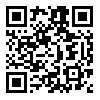Shahid Beheshti University , fr.khodadadi@gmail.com
Abstract: (793 Views)
The purpose of this research is to investigate the effects of the government's foreign exchange oil revenues and productivity in a small open oil economy under two low credit scenarios. Above the monetary policy maker. To achieve this goal, a new Keynesian random dynamic general equilibrium model has been designed in terms of the realities of Iran's economy, and then the effects of impulses have been investigated. After determining the input values of the model and estimating the parameters using the seasonal data of the Iranian economy during the period of 1991-2022 using the Bayesian estimation method, the results obtained from the simulation of the model variables indicate the validity of the model in describing the fluctuations of the Iranian economy. By examining the reaction shock functions for the key variables of the model in relation to the impulse of the government's foreign exchange oil revenues and productivity under two scenarios of low and high credibility of the monetary policy maker, we came to the conclusion that, when the monetary policy maker has the necessary credibility, the economic agents of the effects of the impulses consider it temporary and do not tie their decisions to it. Therefore, even if the policymaker does not adopt a specific policy to reduce the fluctuations of the impulses, the effects of the impulses will be discharged faster and the variables will stabilize sooner than when the credibility of the monetary policymaker is low.
Keywords: Credibility of the monetary policy maker, Impulse of foreign exchange earnings, Impulse of productivity, Stochastic dynamic general equilibrium model
References
1. Aboyitungiye, B., & Mathu, M. (2024). Monetary policy credibility and economic growth: A comparative analysis of COMESA and ECOWAS countries. Jurnal Ekonomi Pembangunan, 24(2). [DOI:10.23917/jep.v24i2.23113]
2. Benigno, G., & Benigno, P. (2006). Designing targeting rules for international monetary policy cooperation. Journal of Monetary Economics, 53(3), 473-506. [DOI:10.1016/j.jmoneco.2005.03.009]
3. Bordo, M., & Siklos, P. (2014). Central bank credibility, reputation & inflation targeting in historical perspective. National Bureau of Economic Research. [DOI:10.3386/w20287]
4. Caputo, R., & Pedersen, M. (2020). The Evolving Dynamics of Real Exchange Rates: The Influence of Central Bank Policy Preferences. Economic Modelling, 90, 445-464. [DOI:10.1016/j.econmod.2019.11.029]
5. Carriere, S., Bertrand, G., & Nicolas, M. (2016). Monetary policy credibility and exchange rate pass-through. IMF Working Papers, 2016(240). [DOI:10.5089/9781475560312.001]
6. Carriere-Swallow, Y., Gruss, B., Magud, N. E., & Valencia, F. (2016). Monetary policy credibility and exchange rate pass-through. International Monetary Fund. [DOI:10.5089/9781475560312.001]
7. De Paoli, B. (2009). Monetary policy and welfare in a small open economy. Journal of international Economics, 77(1), 11-22. [DOI:10.1016/j.jinteco.2008.09.007]
8. Erfani, A., & Taleb Bidakhti, A. (2018). Investigating the role of credit and credibility of monetary policymaker on financial stability in the Iranian economy. Quarterly Journal of Economic Research and Policies, 26(85), 219-241. (In Persian).
9. Gerali, A., Neri, S., Sessa, L., & Signoretti, F. M. (2010). Credit and banking in a DSGE model. Journal of Money, Credit and Banking, 42, 107-141. [DOI:10.1111/j.1538-4616.2010.00331.x]
10. Grace, R. (2022). The economics of full reserve banking: Recent developments and critiques (Master's thesis, University of Cape Town). [http://hdl.handle.net/11427/37783]
11. Hadian, M., & Dargahi, H. (2021). Macroeconomic effects of current and development expenditures of the government in Iran: DSGE approach. Quarterly Journal of Applied Theories of Economics, 8(1), 241-272. [DOI:10.22034/ecoj.2021.42007.2744]
12. Jafari Samimi, A., & Hanjari, S. (2008). Inflation targeting: Its effect on the inflation process in different countries of the world. Journal of Financial Studies, 1.
13. Khodadadi, F. and Samsami, H. (2024). Exploring the Impact of Shocks on Welfare Loss in Fractional and Full Reserve Banking: DSGE approach. Stable Economy Journal, 5(2), 21-53. [doi: 10.22111/sedj.2024.47990.1448]
14. Levieuge, G., Lucotte, Y., & Ringuedé, S. (2018). Central Bank Credibility and the Role of Expectations: Insights from a Novel Credibility Index. Review of World Economics (Weltwirtschaftliches Archiv), 154(3), 493-535. [DOI:10.1007/s10290-018-0308-6]
15. Mahmoudinia, D., & Abdolahi Nasab, F. (2024). The impact of central bank independence and preferences on inflation targeting in rule-based and discretionary monetary policy approaches. Quarterly Journal of Applied Theories of Economics, 10(4), 235-276. [DOI:10.22034/ecoj.2024.54640.3144. (In Persian).]
16. Park, K. (2023). Central bank credibility and monetary policy. International Journal of Central Banking, 19(2), 145-197. [DOI:10.2139/ssrn.3306035]
17. Taghinezhad Omran, V., Ehsani, M. A., & Rezaee, M. (2018). An assessment of monetary policy credibility in Iran. Macroeconomics Research Letter, 13(25), 39-63. [DOI:10.22080/iejm.2018.2033 (In Persian).]
18. Taylor, J. B. (2019). Inflation targeting in high inflation emerging economies: Lessons about rules and instruments. Journal of Applied Economics, 22(1), 103-116. [DOI:10.1080/15140326.2019.1565396]
19. Uhlig, H. (1999). A toolkit for analyzing nonlinear dynamic rational expectations models easily. In Computational Methods for the Study of Dynamic Economics (Vol. 1995-97). [DOI:10.1093/0199248273.003.0003]
20. Veisi, N., Makhmali, H., & Kamali, P. (2019). The impact of inflation targeting policy on currency management in developing countries. Journal of Strategic Management Studies, 10(38), 207-235. 20.1001.1.22286853.1398.10.38.9.5
21. Yazdani, M., Dargahi, H., & Akbari Afrouzi, R. (2017). Inflation targeting with emphasis on real exchange rate in Iran's economy. Iranian Journal of Economic Research, 22(72), 151-186. [DOI:10.22054/ijer.2017.8295.]
| Rights and permissions | |
.jpg) |
This work is licensed under a Creative Commons Attribution 4.0 International License. |


